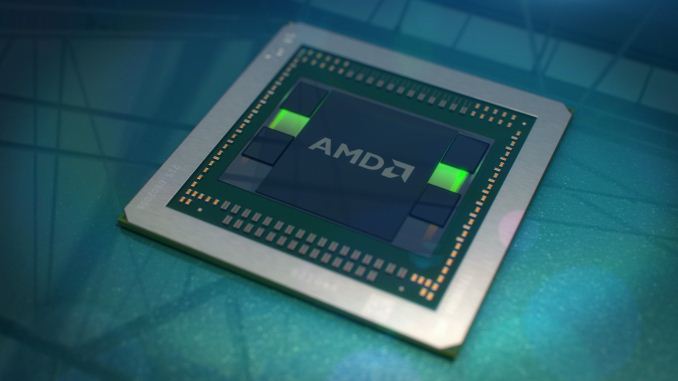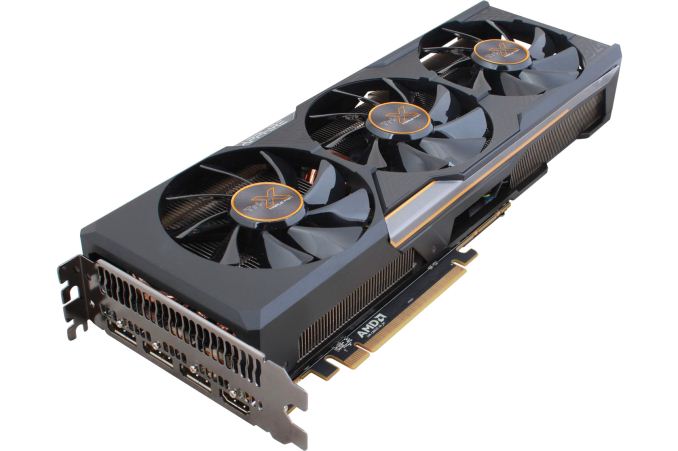The AMD Radeon R9 Fury Review, Feat. Sapphire & ASUS
by Ryan Smith on July 10, 2015 9:00 AM ESTFinal Words
Bringing this video card review to a close, we’ll start off with how the R9 Fury compares to its bigger sibling, the R9 Fury X. Although looking at the bare specifications of the two cards would suggest they’d be fairly far apart in performance, this is not what we have found. Between 4K and 1440p the R9 Fury’s performance deficit is only 7-8%, noticeably less than what we’d expect given the number of disabled CUs.
In fact a significant amount of the performance gap appears to be from the reduction in clockspeed, and not the number of CUs. And while overclocking back to R9 Fury X clockspeeds can’t recover all of the performance, it recovers a lot of it. This implies that Fiji on the whole is overweight on shading/texturing resources, as it’s not greatly impacted by having some of those resources cut off.
Consequently I can see why AMD opted to launch the R9 Fury X and R9 Fury separately, and to withhold the latter’s specifications until now, as this level of performance makes R9 Fury a bit of a spoiler for R9 Fury X. 7-8% makes R9 Fury notably slower than R9 Fury X, but it’s also $100 cheaper, or to turn this argument on its head, the last 10% or so that the R9 Fury X offers comes at quite the price premium. This arguably makes the R9 Fury the better value, and not that we’re complaining, but it does put AMD in an awkward spot.
As for the competition, that’s a bit more of a mixed bag. R9 Fury X had to compete with GTX 980 Ti but couldn’t surpass it, which hurt it and make the GTX the safer buy. On the other hand R9 Fury needs to compete with just the older GTX 980, and while it’s by no means a clean sweep for AMD, it’s a good outcome for AMD. The R9 Fury offers between 8% and 17% better performance than the GTX 980, depending on if we’re looking at 1440p or 4K. I don’t believe the R9 Fury is a great 4K card – if you really want 4K, you really need more rendering power at this time – but even at 1440p this is a solid performance lead.
Along with a performance advantage, the GTX 980 is also better competition for the R9 Fury (and Fiji in general) since the GTX 980 is only available with 4GB of VRAM. This negates the Fiji GPU’s 4GB HBM limit, which is one of the things that held back the R9 Fury X against the GTX 980 Ti. As a result there are fewer factors to consider, and in a straight-up performance shootout with the GTX 980 the R9 Fury is 10% more expensive for 8%+ better performance. This doesn’t make either card a notably better value, but makes the R9 Fury a very reasonable alternative to the GTX 980 on a price/performance basis.
The one area where the R9 Fury struggles however is power efficiency. GTX 980’s power efficiency is practically legendary at this point; R9 Fury’s is not. Even the lower power of our two R9 Fury cards, the ASUS STRIX, can’t come close to GTX 980’s efficiency. And that’s really all there is to that. If energy efficiency doesn’t matter to you then the R9 Fury’s performance is competitive, otherwise GTX 980 is a bit slower, a bit cheaper, and uses a lot less power. That said, AMD’s partners do deserve some credit for keeping their acoustics well under control despite the high power and heat load. It’s not an apples-to-apples comparison against the reference GTX 980 and its blower, but at the very least picking R9 Fury over GTX 980 doesn’t mean you have to pick a loud card as well.
And that brings us to the third aspect of this review, which is comparing the R9 Fury cards from Sapphire and ASUS. Both partners have come to the plate with some very good open air cooled designs, and while it’s a bit unusual for AMD to launch with so few partners, what those partners have put together certainly paint R9 Fury in a positive light.
Picking between the two ends up being a harder task than we expected, in part because of how different they are at times. From a performance perspective the two cards offer very similar performance, with Sapphire’s mild factory overclock giving them only the slightest of edges, which is more or less what we expected.
However the power and acoustics situation is very different. On its own the ASUS STRIX’s acoustics would look good, but compared to the Sapphire Tri-X’s deliciously absurd acoustics it’s the clear runner-up. On the other hand the ASUS card has a clear power efficiency advantage of its own, but I’m not convinced that this isn’t just a byproduct of the ASUS card randomly receiving a better chip. As a result I’m not convinced that this same efficiency advantage exists between all ASUS and Sapphire cards; ASUS’s higher voltage R9 Fury chips have to go somewhere.
In any case, both are solid cards, but if we have to issue a recommendation then it’s hard to argue with the Sapphire Tri-X’s pricing and acoustics right now. It’s the quietest of the R9 Fury cards, and it’s slightly cheaper as well. Otherwise ASUS’s strengths lie more on their included software and their reputation for support than in their outright performance in our benchmark suite.
And with that, we wrap up our review of the second product in AMD’s four Fiji launches. The R9 Fury was the last product with a scheduled launch date, however AMD has previously told us that the R9 Nano will launch this summer, meaning we should expect it in the next couple of months. With a focus on size and efficiency the R9 Nano should be a very different card from the R9 Fury and R9 Fury X, which makes us curious to see just what AMD can pull off when optimizing for efficiency over absolute performance. But that will be a question for another day.












288 Comments
View All Comments
CiccioB - Monday, July 13, 2015 - link
For a GPU that was expected to beat Titan X hands down, just being faster than 980 is quite a fail.Also due to the high cost technology involved in producing it.
Be happy for that, and just wait or DX12 to have some hope to gain few FPS with respect to the competitor.
I just think DX12 is not going to change anything (whatever these cards will gain will be the same for nvidia cards) and few FPS more or less is not what we expected from this top ties class (expensive) GPU.
Despite the great steps ahead made by AMD in power consumption, it still is a fail.
Large, expensive, still consuming more, and badly scaling.
Hope that with the new 16nm FinFet PP things will change radically, or we will witness a 2 year dominance again by nvidia with high prices.
superjim - Monday, July 13, 2015 - link
Used 290's are going for sub-$200 (new for $250). Crossfire those and you get better performance for much less.P39Airacobra - Tuesday, July 14, 2015 - link
Ok compared to the Fury X, The Regular R9 Fury makes a bit more sense than the X model. It is priced better (But still priced a bit too much) And it has almost even performance with the X model. However the power consumption is still insane and unreasonable for todays standards! And the temps are way too high for a triple fan card! With a 70c temp running triple fans I doubt there is any room at all for overclocking! I do respect this card's performance! But it is just not worth it for the price you have to pay for a hefty PSU, And the very loud and expensive cooling setup you will have to put inside your case! To be honest: If I was stuck with a old GTX 660 Ti, And someone offered me a R9 Fury for even trade, I would not do it!ES_Revenge - Tuesday, July 14, 2015 - link
The power consumption is not insane or unreasonable for "today's standards". Only the GTX 960, 970, 980, Titan X are better. So it's unreasonable for Nvidia's new standard but it's actually an improvement over Hawaii, etc. of the past.Compared to current Nvidia offerings, it's bad yeah but we can't really established standards on their cards alone. R9 390/X, 380, etc. are still power hungry for their performance and they are still "today's" cards, like it or not.
Don't get me wrong I agree they really need to start focusing on power/heat reduction, but we're not going to see that from AMD until their next gen cards (if they make it that far, lol).
Gunbuster - Wednesday, July 15, 2015 - link
AMD thread with no Chizow comments? My world is falling apart :POxford Guy - Wednesday, July 15, 2015 - link
I'm sure this person has more than one alias.FlushedBubblyJock - Thursday, July 16, 2015 - link
We'd know him by his words, his many lengthy words with links and facts up the wazoo, and he is so proud he would not hide with another name, like a lousy, incorrect, uninformed, amd fanboy failure.FlushedBubblyJock - Wednesday, July 15, 2015 - link
Just think about placing your bare hand on 3 plugged in 100 Watt light bulbs ... that's AMD's housefire for you !My god you could cook a steak on the thing.
3X 100 watter light bulbs frying everything in your computer case... awesome job amd.
Oxford Guy - Wednesday, July 15, 2015 - link
Because the GTX 480 was quieter, had better performance per watt, and was a fully-enabled chip.FlushedBubblyJock - Thursday, July 16, 2015 - link
So the 480 being hot makes this heated furnace ok ?What exactly is the logic there ?
Are you a problematic fanboy for amd ?